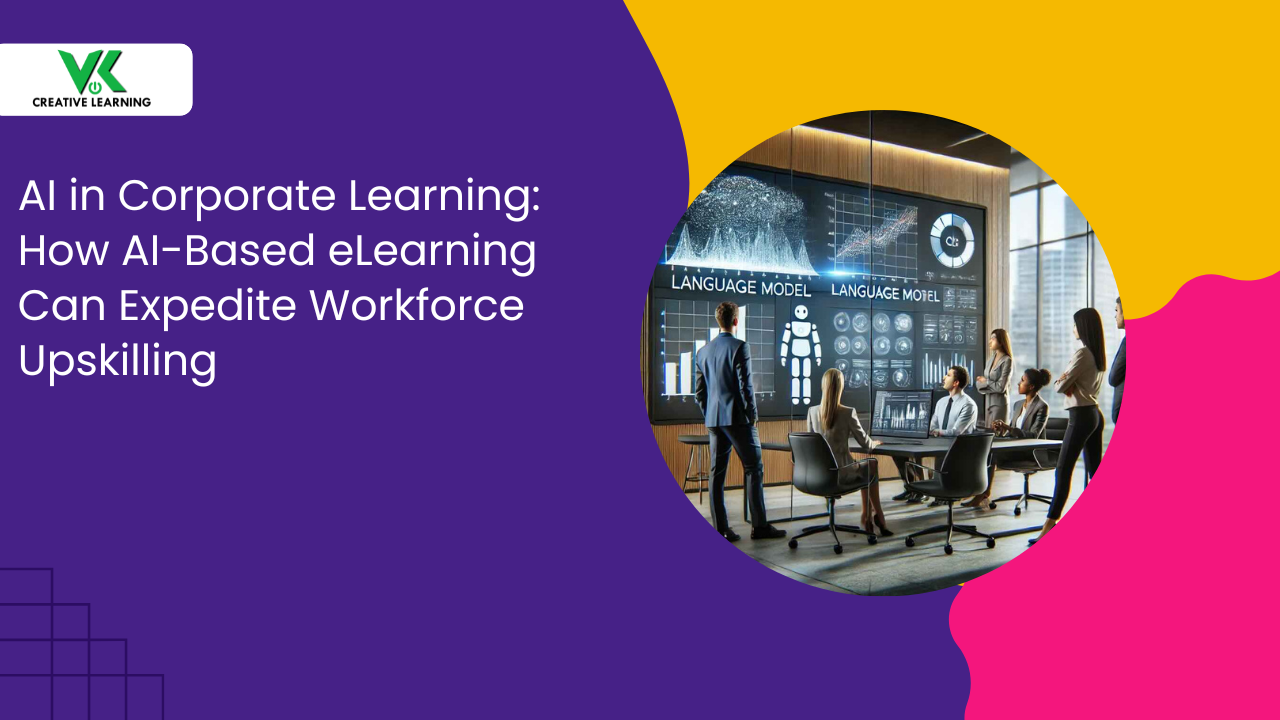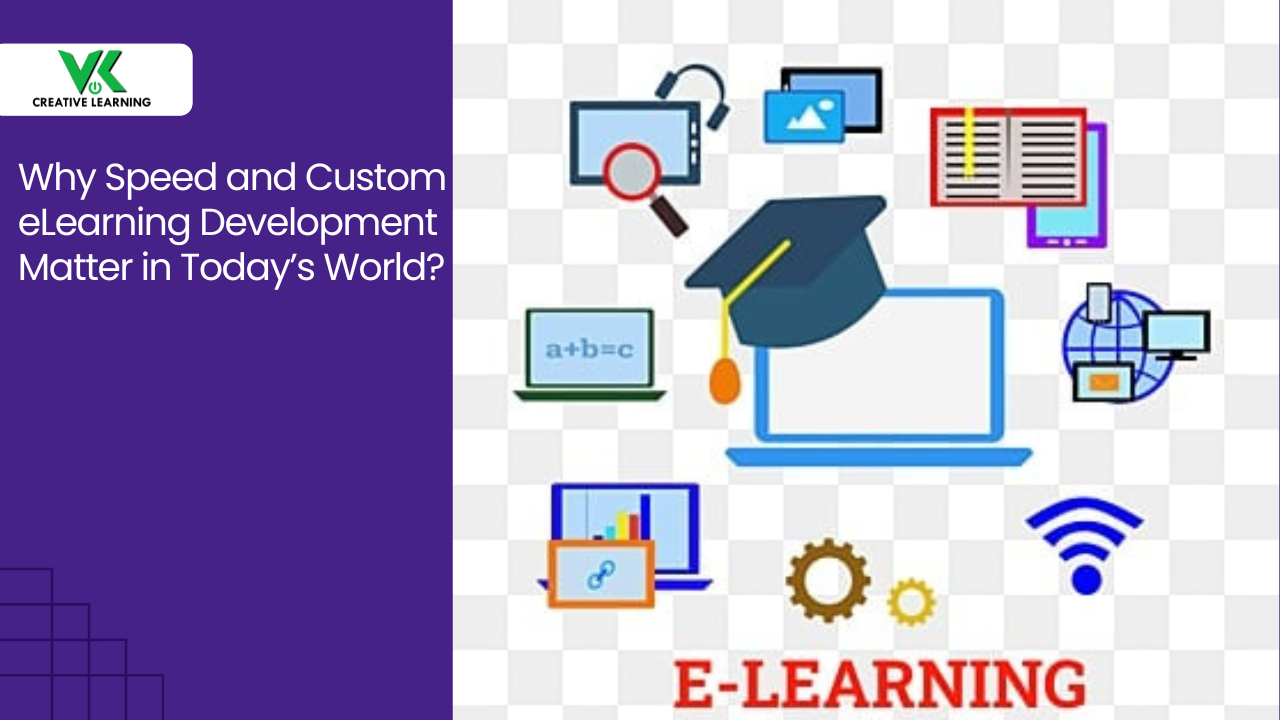Learning Industrial Applications with VR, AR, and MR E-learning Solutions
October 25, 2022
Sometimes, it becomes challenging for a workforce to attend training in person, since they may be required to travel to the central office for training purposes or there may be a sudden rise in the Covid-19 wave. Consequently, their training may not happen on time and hence, they may lack the knowledge of essential technologies and processes required to support a company's growth.
Importantly, one-size-fits-all online training may not help most learners, as they may find it monotonous and uninteresting. The major reason for this being, the explanation given in the training materials may not be something the learners can relate to or the training material will be inundated with a text-based explanation of various concepts.
So how should businesses respond to the growing need for industrial training? Virtual Reality (VR), Augmented Reality (AR), and Mixed Reality (MR) have emerged as the most successful eLearning solutions for successful and impactful training programs in various industries.
In recent years, the utility and acceptability of Augmented Reality and Virtual Reality technologies have increased. Corporations are using these extraordinary immersive experiences in their everyday operations. Forecasts put the value of the AR/VR industry at $209.2 billion by 2022.
According to the study report, many major enterprises will investigate and use Augmented Reality, Virtual Reality, And Mixed Reality technologies in the coming years.
One research study projects that the global market for mixed reality will reach $5,362.1 million by 2024. It would grow at a CAGR of 71.6% between 2018 and 2024.
A quick glance at VR, AR, and MR technologies and their stats in a nutshell
Virtual Reality (VR): Virtual reality may be experienced by donning a headgear that generates computer-generated 3D animations, simulations, and aesthetically attractive material with surround sound effects.
When using virtual reality (VR), students are far less likely to get sidetracked. Using a VR headset, you may capture the learners' attention and keep them riveted to their displays while they engage in simulations and other virtual experiences. In contrast to traditional eLearning, VR immerses the learners in a fictitious setting, isolating them from the actual world. Immersed in VR, students are likely to remember more material and achieve greater success.
Stats related to VR: The following is a selection of data gleaned from research carried out by PricewaterhouseCoopers:
According to the PwC 2022 US Metaverse Survey, 51% of businesses are either in the process of incorporating VR into their strategy or have already included VR in at least one specialized business line. ? One survey found that 34% of metaverse users see a more effective approach to developing and training their professionals using VR. This would act as a major advantage they are presently reaping or may anticipate in the future.
The emotional investment of V-learners was 3.75 times that of classroom learners and 2.3 times that of e-learners. Three-quarters of the students polled stated they experienced an "aha moment" when taking the virtual reality course on diversity and inclusion.
- VR eLearning courses are four times more efficient than classroom training.
Augmented Reality (AR): Augmented reality is achieved by integrating a digital component into a real-time view as it happens in the physical world. You can see the views via the use of hand-held devices.
Mixed Reality (MR): It creates a visual representation by combining the actual and virtual worlds together. Hence, the users get more information about the real world. Mixed Reality is used in a wide variety of industries such as education, entertainment, recreation, military training, healthcare, commercial digital marketing, and human-in-the-loop robot control.
Stats related to AR and MR:
- By 2024, predictions suggest that over 67% of smart glasses and smart wearable applications for gaming or multimedia in mind. ? 75% of Mixed Reality applications will be distributed through smartphones, and 40% of Mixed Reality applications will be for social media.
- In 2020, the value of the MR market was just $553.27 million, reflecting a slower growth rate compared to AR and VR. However, ? the market is projected to increase significantly by 2026.
- 39% of IT executives anticipate that Augmented Reality and Mixed Reality will be as prevalent as smartphones by 2025. In the next years, MR will become a more prevalent technology as its use increases.
How is VR/AR/MR e-learning applied across industries?
Given below are some ways by which VR/AR/MR e-learning solutions can be applied across various industries.
VR/AR and MR based-Industrial e-learning for potentially dangerous environments:
VR-based eLearning has been already been integrated into skills training exercises, such as the simulation of uncharted terrain for the U.S. military. Additionally, VR eLearning solutions have made tremendous strides in the aviation and entertainment sectors. VR has recently attracted the attention of the L&D community due to its immense potential.
Various businesses make the most of VR/AR and MR e-learning solutions to conduct training for new joiners, which otherwise may not have been possible to perform physically in a dangerous setting. The AR users can be taken to a plant and provided with needed information about various machinery on their devices, without touching the machinery.
Automobile. In the automobile industry, VR/AR/MR e-learning technologies offer a broad variety of applications. Using AR / MR technology, the various components of an automobile are shown in a virtual world to the customer. Video tutorials, animations, 3D effects, and guidelines may be used in lieu of tedious manuals.
This would help automotive engineers in the workforce to comprehend the manufacturing process and maintenance of automobiles more efficiently and swiftly. VR/AR/MR e-learning solutions can help technicians to learn about various automotive design processes and different ways to accelerate the development process. These are just a few instances of how VR/AR/MR technology is supporting the automobile industry's development, as more can be achieved with VR/AR/MR e-learning.
By incorporating VR/AR/MR e-learning training, manufacturers may cut development time and launch the vehicles fast in the market. Modern image identification technologies, Internet of Things (IoT) devices, Big Data, and artificial intelligence can be further incorporated with VR/AR and MT technologies to enhance training sessions.
Whom to approach for creating VR/AR/MR e-learning solutions?
VK Creative Learning (VKCL) develops VR/AR/MR e-learning solutions for industrial employee training and development programs. AR and VR e-learning solutions may be used to teach technicians so that they have a comprehensive understanding of the industrial working environment and are ready to work in the field after receiving suitable training.




